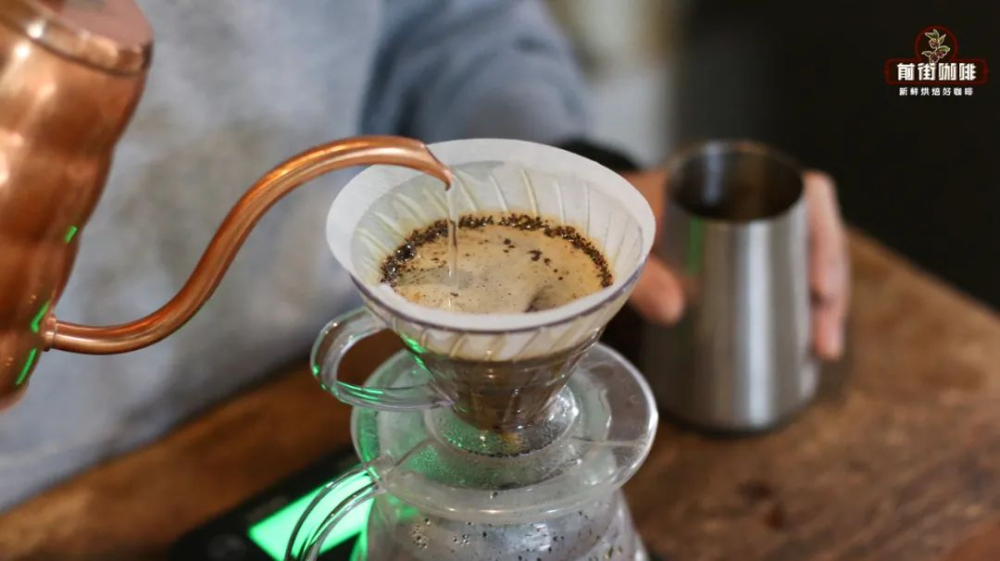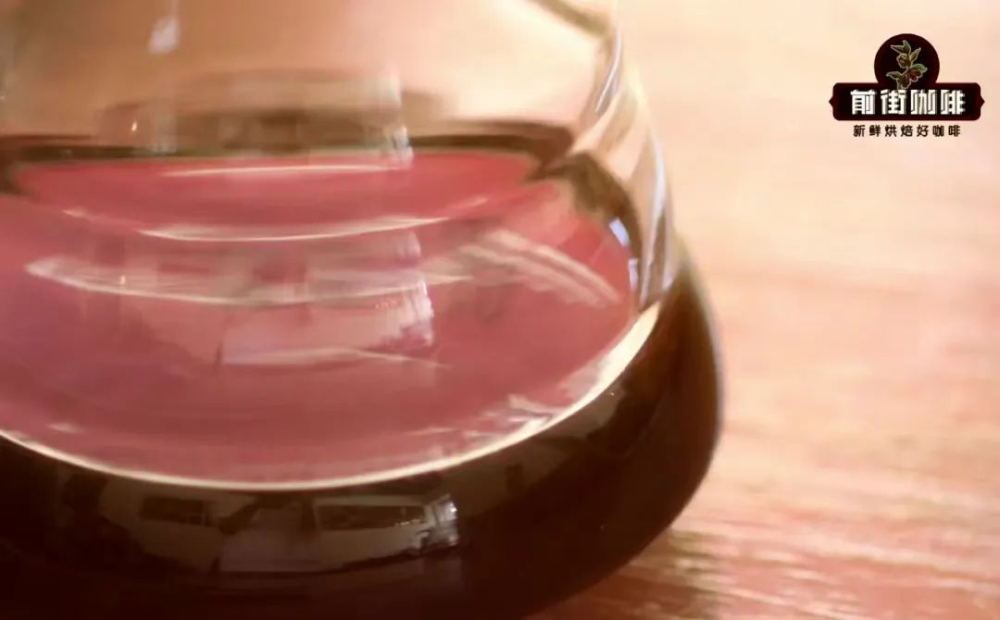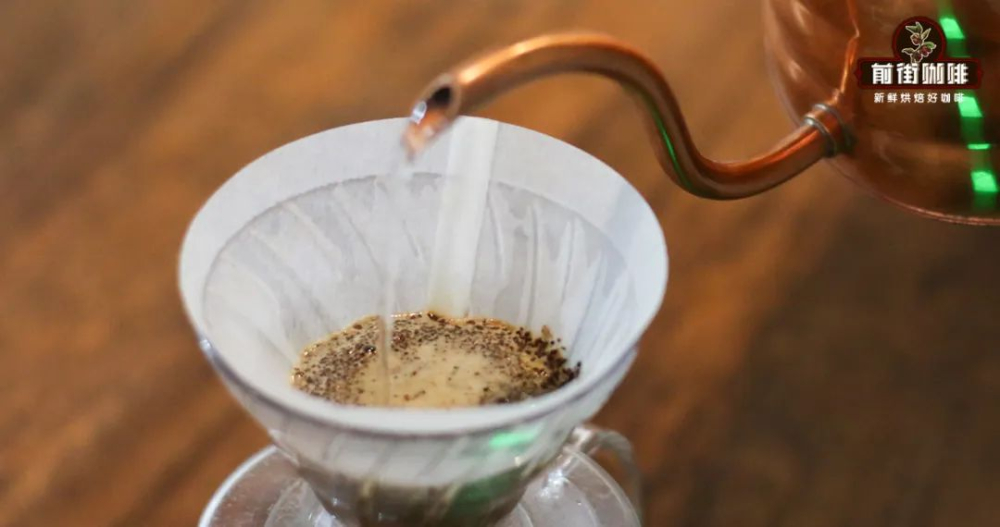Why is hand-made coffee often bitter? Causes and Solutions of excessive extraction of Coffee
In the circle of hand-brewing coffee, there are often friends who describe themselves as "excellent hands" (that is, to master the brewing methods of all kinds of over-extracted coffee).
Of course, if a cup of coffee is called "over-extracted", there must be some bad taste in the coffee. Usually a cup of over-extracted coffee will have a bitter or miscellaneous bitter taste, but not all uncomfortable bitterness can be attributed to the extract. For example, if the coffee is too strong, there will be uncomfortable bitterness. This kind of bitterness is not superb.

First, let's take a look at the mechanism of excellence. This statement comes from the gold cup extraction principle that we are familiar with. Through research, Dr. Luo found that only 30% of the substances in coffee beans are soluble in water, and the extraction rate is between 18% and 22%. When the coffee has a bad bitter taste, the extraction rate is more than 22%. Slowly, excessive extraction is used to show that coffee has that kind of bitter taste. To this day, whether the improvement in the quality of coffee can make the extraction rate of more than 22% still delicious is still under study. So, if you hear someone say extract today, then he is not saying that coffee extraction is more than 22%, but that he drinks that bitter, miscellaneous bitter taste.

The main reason for coffee over-extraction is that the extraction efficiency is too high, and the performance of the brewing parameters are as follows: too high water temperature, too fine coffee grinding, too much water injection, too long extraction time, too strong water injection stirring. Almost all the methods that can improve the extraction rate of coffee may be the cause of over-extraction. In the final analysis, your cooking plan is unreasonable, or your cooking scheme has high technical requirements for brewers, resulting in a low fault tolerance rate. For example, when we watch a world-class hand race, some parameter contestants will use some very personal style brewing schemes, some brewing schemes are to pursue the extreme flavor of coffee, and there are requirements for the brewer's technology and understanding ability, and the fault tolerance rate is relatively low. Improper cooking is very prone to the taste of miscellaneous bitterness.

It is difficult to judge whether it is reasonable from a single parameter, such as the degree of grinding, some people use the thickness of coarse sugar, some people use the thickness of fine salt. Water injection techniques, some people like to gently water injection, some people like to quickly circle to stir the powder layer of water injection. Judging from a certain parameter alone, it cannot be said that coarse sugar is right, fine salt is wrong; soft circling is delicious, and quick stirring is over-extraction. It is necessary to combine all parameters to judge whether it is reasonable or not.

In the construction of the cooking scheme, Qianjie is more inclined to use the scheme with high fault tolerance. For example, in the choice of water temperature, Qianjie usually uses 91 degrees. This water temperature has a high fault tolerance rate for many coffee beans. It can be compatible with other parameters that are more difficult to adjust (such as grinding quality). If the fine powder is less, brewing with 93 degrees will get a fuller and richer flavor, but if the fine powder is too much. If you brew it with 93 degrees, it is easy to have a bitter taste. When using 91 degrees and less fine powder, the flavor may not be as rich as 93 degrees, but in the case of more fine powder, using 91 degrees flushing, it is not so easy to produce extractive flavor. This is the high fault tolerance rate. The same is true for the selection of circle water injection, coffee powder thickness and water injection ratio. Choosing a parameter with high fault tolerance can avoid a lot of bad flavor to the greatest extent.
Important Notice :
前街咖啡 FrontStreet Coffee has moved to new addredd:
FrontStreet Coffee Address: 315,Donghua East Road,GuangZhou
Tel:020 38364473
- Prev

What is Roman espresso Espresso Romano? Italian concentrate with lemon
Sometimes when we taste a cup of sour coffee, it will be described as rising, bright and fresh acidity, probably because our taste buds feel citric acid. Lemon as a "regular customer" in the citrus classification flavor description of fruity coffee, when the coffee has the elegant aroma and lively acidity of lemon, the strong acidity "dominates".
- Next

The correct brewing method of hanging ear coffee bag how much water is 10g hanging ear coffee brewed?
With the Spring Festival approaching, coffee makers have begun to make full preparations for the holiday, hoarding one or two packs of their favorite coffee beans and planning to make them at home. On the other hand, the "lazy man" wants to put aside all kinds of complicated cooking utensils and a pile of tedious parameters, hoping to keep everything simple. The hanging-ear coffee bag is our "savior". Hanging earbags is for convenience.
Related
- Beginners will see the "Coffee pull flower" guide!
- What is the difference between ice blog purified milk and ordinary milk coffee?
- Why is the Philippines the largest producer of crops in Liberia?
- For coffee extraction, should the fine powder be retained?
- How does extracted espresso fill pressed powder? How much strength does it take to press the powder?
- How to make jasmine cold extract coffee? Is the jasmine + latte good?
- Will this little toy really make the coffee taste better? How does Lily Drip affect coffee extraction?
- Will the action of slapping the filter cup also affect coffee extraction?
- What's the difference between powder-to-water ratio and powder-to-liquid ratio?
- What is the Ethiopian local species? What does it have to do with Heirloom native species?

